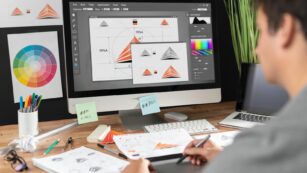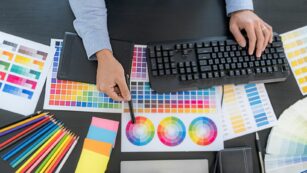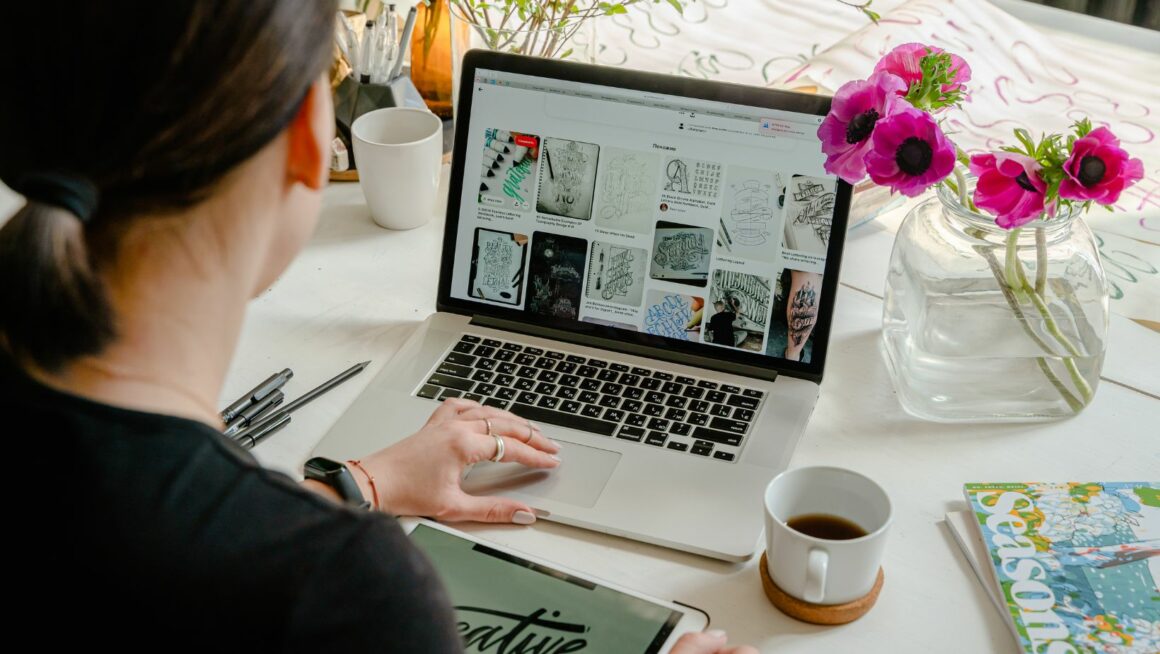In today’s digital age, contemporary graphic design shapes much of our visual environment, from the sleek interfaces of our smartphones to the captivating advertisements that punctuate cityscapes. This field is a dynamic blend of technology and artistry, constantly evolving with the latest trends and technological advancements. As designers push the boundaries of creativity, they influence not only aesthetic preferences but also how brands communicate with their audiences.
Contemporary Graphic Design
Contemporary graphic design transforms complex ideas into visual narratives that captivate audiences and foster brand identity. It combines traditional art principles with cutting-edge digital tools to create dynamic visuals across various media platforms. This section explores key aspects of contemporary graphic design, including its tools, trends, and applications.
Tools and Technologies
 Modern graphic designers rely on advanced software and technologies to craft their creations. Programs such as Adobe Photoshop, Illustrator, and InDesign remain staples in the designer’s toolkit. Additionally, web-based platforms like Canva and Sketch have gained popularity for their user-friendly interfaces and accessibility. These tools enable designers to execute precise edits, create complex layouts, and experiment with an array of typographies and color schemes.
Modern graphic designers rely on advanced software and technologies to craft their creations. Programs such as Adobe Photoshop, Illustrator, and InDesign remain staples in the designer’s toolkit. Additionally, web-based platforms like Canva and Sketch have gained popularity for their user-friendly interfaces and accessibility. These tools enable designers to execute precise edits, create complex layouts, and experiment with an array of typographies and color schemes.
Emerging Trends
The dynamic nature of contemporary graphic design is reflected through evolving trends. Minimalism continues to dominate, characterized by clean lines and uncluttered layouts. In contrast, maximalist designs featuring bold colors and intricate patterns are also gaining traction. Sustainability in design has emerged as a crucial theme, prompting designers to opt for eco-friendly materials and digital formats to reduce environmental impact.
Applications in Industry
 Graphic design plays a pivotal role in multiple industries, shaping how businesses communicate with their target markets. In marketing, visually striking campaigns help attract and retain customer attention, enhancing brand recall. The entertainment industry employs graphic design to create compelling movie posters and album covers. Meanwhile, in technology, designers are instrumental in developing intuitive user interfaces for apps and software, enhancing user experience.
Graphic design plays a pivotal role in multiple industries, shaping how businesses communicate with their target markets. In marketing, visually striking campaigns help attract and retain customer attention, enhancing brand recall. The entertainment industry employs graphic design to create compelling movie posters and album covers. Meanwhile, in technology, designers are instrumental in developing intuitive user interfaces for apps and software, enhancing user experience.
Each application demonstrates the versatility and necessity of contemporary graphic design in enhancing communication and aesthetic appeal across different sectors.
Key Elements of Contemporary Graphic Design
Contemporary graphic design emphasizes innovation and operates at the intersection of technology and art. This section explores key elements that define the visual aesthetic of this era.
Minimalism and Simplicity
 Minimalism in graphic design focuses on reducing elements to the essentials, creating clean, open spaces that enhance user experience. This style employs a limited color palette and sparse text to highlight the core message, making it straightforward for the audience to grasp the intended communication swiftly. Brands such as Apple and Google exemplify this approach, where simplicity aids in delivering a clear and direct message without overwhelming the viewer.
Minimalism in graphic design focuses on reducing elements to the essentials, creating clean, open spaces that enhance user experience. This style employs a limited color palette and sparse text to highlight the core message, making it straightforward for the audience to grasp the intended communication swiftly. Brands such as Apple and Google exemplify this approach, where simplicity aids in delivering a clear and direct message without overwhelming the viewer.
Bold Typography
Typography in contemporary graphic design doesn’t just convey information but also acts as a dynamic visual. Bold typography makes a statement and grabs attention with its sheer size and dramatic impact. This visual strategy often involves using strong, contrasting fonts to create a sense of hierarchy and focus within a layout. For example, magazine covers and online banners frequently utilize bold typography to stand out and attract viewers in a competitive visual marketplace.
Future Trends in Graphic Design
 The dynamic nature of contemporary graphic design ensures it remains at the forefront of innovation and creativity. As technology advances so does the potential for graphic design to evolve into new realms of expression and functionality. Designers are increasingly integrating AR, VR, and AI into their workflows creating more interactive and immersive experiences. This not only transforms how designs are created but also how they’re perceived and interacted with by the audience.
The dynamic nature of contemporary graphic design ensures it remains at the forefront of innovation and creativity. As technology advances so does the potential for graphic design to evolve into new realms of expression and functionality. Designers are increasingly integrating AR, VR, and AI into their workflows creating more interactive and immersive experiences. This not only transforms how designs are created but also how they’re perceived and interacted with by the audience.
Looking ahead the importance of sustainability in design will likely gain momentum. As public awareness of environmental issues grows designers will face more pressure to adopt eco-friendly practices and materials in their work. This shift is expected to influence design trends and consumer expectations significantly.
Graphic design is poised to continue its critical role in shaping the visual and experiential landscape of our digital world. With each technological breakthrough and creative innovation designers not only enhance aesthetic appeal but also strengthen the strategic impact of visual communication across industries.

